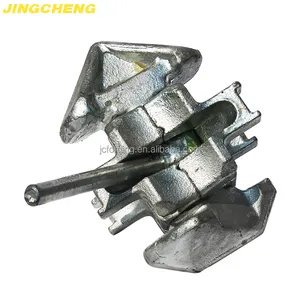


















The container middle twist lock is an integral component in the realm of cargo transport, ensuring the stability and security of containers on their journey. This device plays a pivotal role in the structural integrity of container stacks, both on ships and on land-based transport modes.
There are various types of container twist locks, with the middle twist lock being a commonly used variant. These locks are typically crafted from robust materials like steel or cast steel, designed to withstand the rigors of heavy-duty use and the harsh conditions of maritime environments.
The primary application of container securing twist locks is to connect shipping containers vertically. Their design allows for easy engagement and disengagement, which is crucial for efficient container handling operations. The twist lock mechanism is engineered for quick locking and unlocking, facilitating seamless container stacking and unstacking processes.
Utilizing container middle twist locks offers numerous advantages. Their durability ensures a long service life, while their ease of use contributes to operational efficiency. The design of these locks also enhances safety by providing a secure connection between containers, minimizing the risk of accidents due to shifting loads.
When selecting a container lock, it is essential to consider the compatibility with the containers in use, the material's resistance to environmental factors, and the lock's load-bearing capacity. These factors ensure that the chosen twist lock will perform effectively under the specific conditions of use.
Regular maintenance of container twist locks is crucial for ensuring their longevity and reliability. Inspections for signs of wear, corrosion, and damage are necessary to maintain the safety and integrity of the locking mechanism.